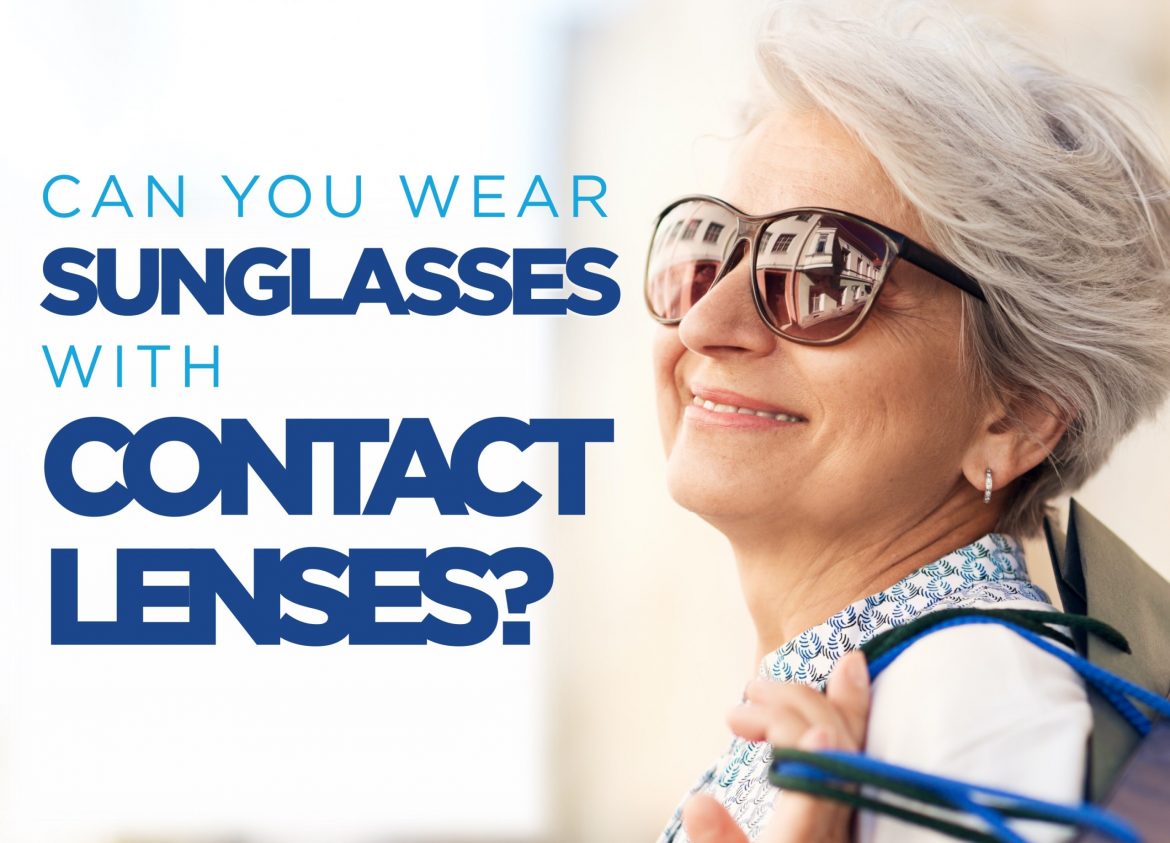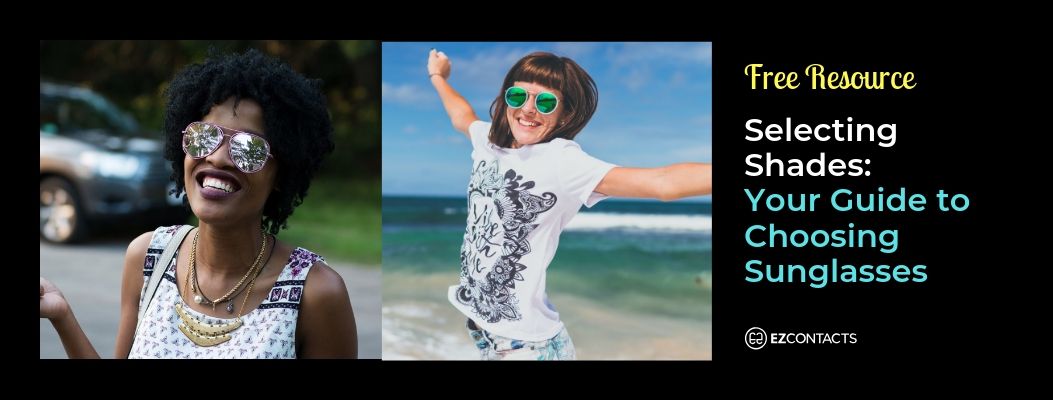
If you’re like most contact lenses wearers, you experienced a wonderful feeling of relief the day you started using them. Now the question is: what do you do when you head out into the bright sunlight?
The answer is to simply wear sunglasses with your contact lenses. Yes, the combination works as well as peanut butter and jelly and provides an added level of eye protection you can’t get with contacts alone.
Let’s examine the benefits of pairing sunglasses with your contact lenses.
Prevent UV rays from damaging your eyes
UV rays are high-energy light waves not visible to the naked eye. But just because you can’t see them doesn’t mean they aren’t harmful. UVA and UVB rays notoriously cause damage to both the skin and eyes, and in the case of the latter, can lead to eye issues like photokeratitis (also known as snow blindness), cataracts, and macular degeneration.
So, if you’re looking for 100% protection from the sun’s harmful UV rays, you need to invest in a good pair of sunglasses—yes, even if you wear contact lenses.
While there are contact lenses currently on the market designed to block UV rays, research shows they’re not nearly as effective. UV filtered contact lenses only do the job partially, blocking out roughly 30% of UVB rays and 10% of UVA rays. Other contact lenses reportedly block out 90% of UVA rays, but why even chance it?
Sunglasses provide an extra layer of protection for your eyes and the skin surrounding them. The area around the eyes, including the eyelids, is very sensitive, making it more vulnerable to certain types of skin cancer, like basal cell carcinoma.

What about HEV or blue light?
Most of us have heard about the harmful effects of UVA and UVB rays, but the subject of HEV light tends to fly under the radar. HEV light stands for high-energy visible light and these light rays make the sky appear blue. HEV light is also referred to as blue light, which has the shortest wavelengths and the most energy.
The main source of blue light is sunlight, meaning it’s everywhere. Because it contains more energy than any other light in the visible spectrum, blue light can be more harmful to the eye than UV rays. This is because blue light passes through both the cornea and the lens of the eye on its way to reaching the retina, whereas the cornea and lens do a good job preventing UV rays from hitting the retina of the eye.
Excessive exposure to blue light can lead to macular degeneration, dry eyes, eye strain, and an inability for the eye to focus. Sunglasses can help prevent blue light from entering your eyes and offer yet another layer of protection for the skin surrounding the eyes, which is important because HEV light has also been shown to lead to wrinkles, sagging skin, and uneven skin tone.
Say goodbye to dry eyes
With the warm weather comes more opportunities to spend time outdoors. That also means more opportunities for the eyes to become dry, particularly on windy days. Sunglasses add an extra layer of protection for contact lens wearers and allow the eyes to stay properly lubricated longer helping to avoid the dreaded burning and discomfort associated with dry eyes.
Stop the glaring discomfort
High-glare situations like skiing, fishing, or working outdoors can cause eye discomfort and irritation, with or without contact lenses. The effects of excessive glare can be exacerbated for those who wear contact lenses and result in the eye strain caused by squinting.
Wearing sunglasses while you’re wearing contact lenses isn’t relegated solely to sunny days. You should also wear sunglasses on overcast or cloudy days to help reduce eye strain and improve visual acuity.
Safety is a factor too
In addition to helping reduce glare, wearing sunglasses over your contacts can also reduce your risk of injury.
If you’re an outdoorsman, sports enthusiast, or even you work outdoors, you have a higher chance of incurring eye injuries. Risks include getting hit in the eye and having airborne debris enter your eye. Potential consequences include minor injuries, scratches to the cornea, scarring, and permanent vision loss.
A pair of lightweight, close-fitting sunglasses add an extra layer of protection. Explore polycarbonate lenses since they’re ultra-lightweight, ultra-durable, and impact and scratch-resistant. As a bonus, they provide 100% protection from UV rays.
Finding the right sunglasses to wear with your contact lenses
You’ve know now you should wear sunglasses with your contact lenses when spending time outdoors. Here are a few more tips:
Get sunglasses that offer 100% UV protection
Designer knockoffs—and their low prices—may look attractive, but will they protect you from premature skin and eye damage or from cataracts and macular degeneration?
Consider polarized lenses
Another thing to look for when shopping sunglasses is whether the lenses are polarized. Polarized lenses help reduce glare to drastically reduce eye strain, squinting, and fatigue.
If you’d like to learn more about selecting the right sunglasses, you’re likely to find our Selecting Shades guide extremely helpful.


